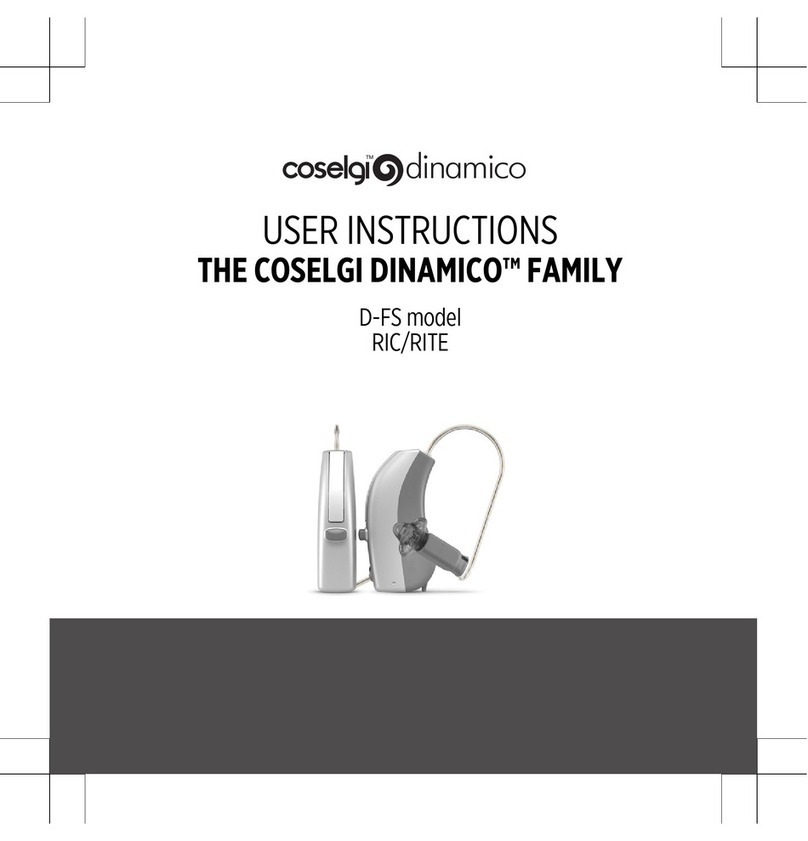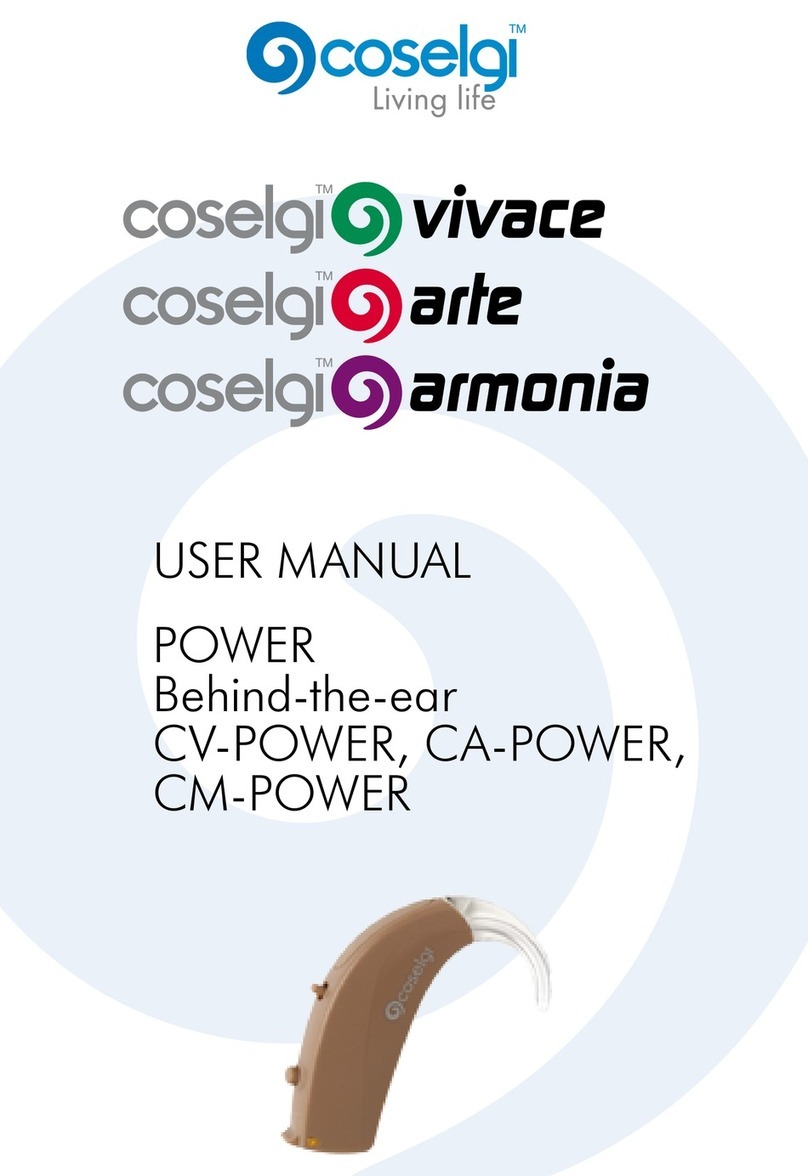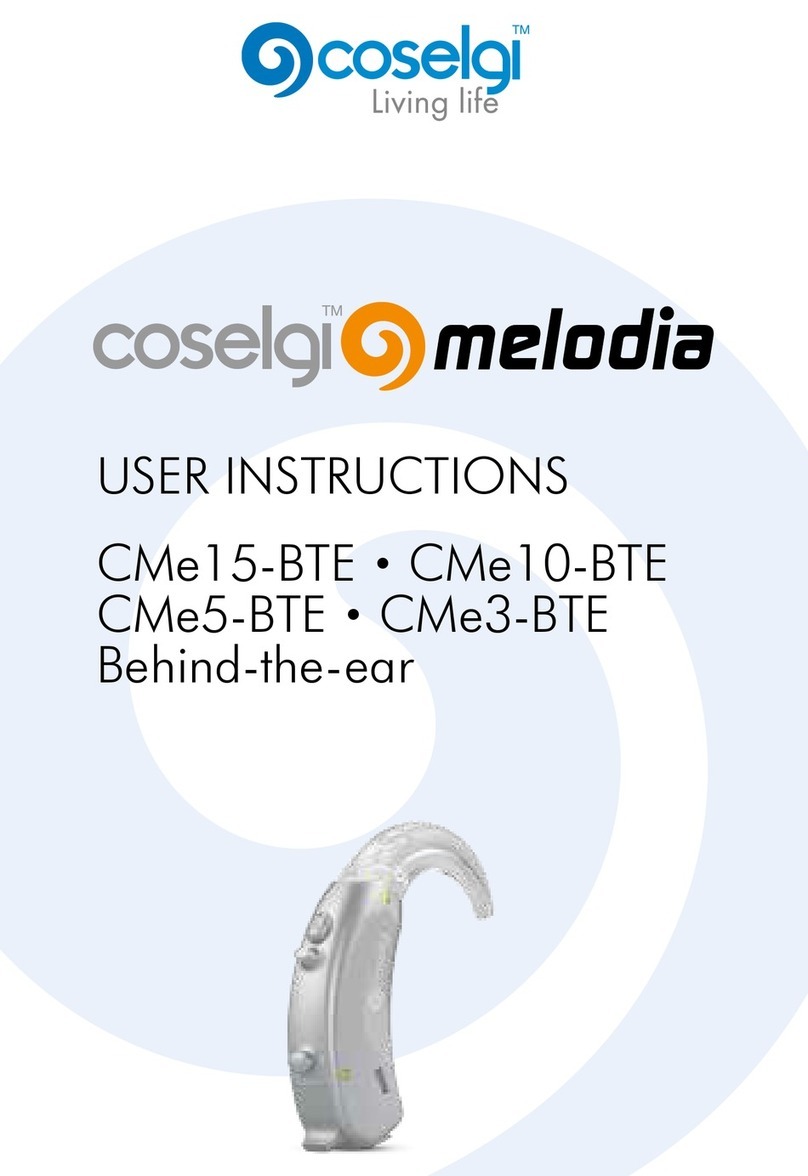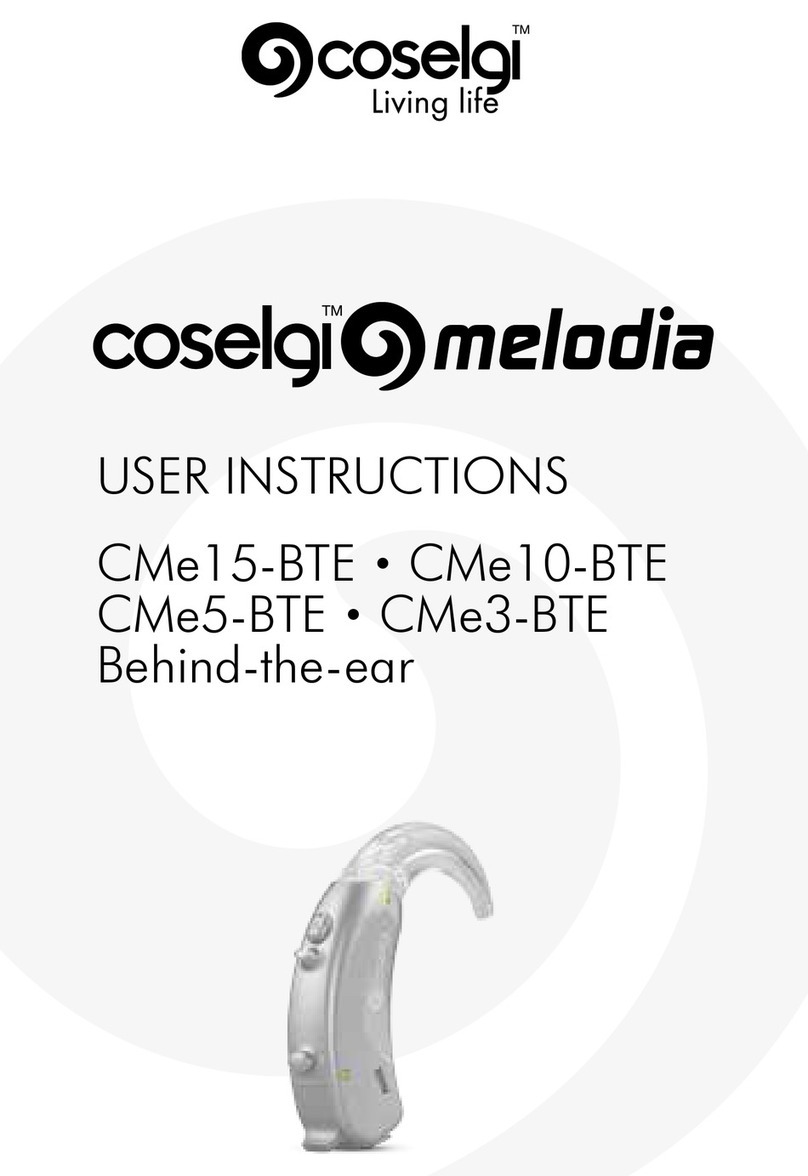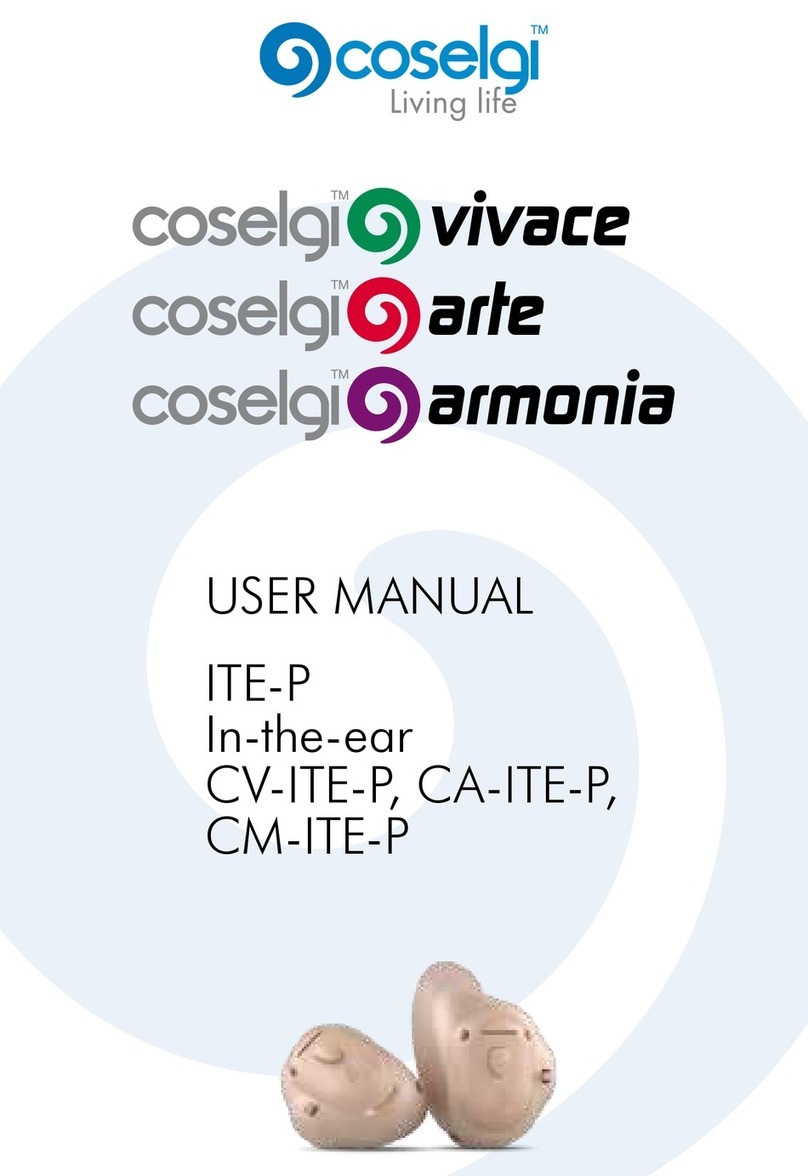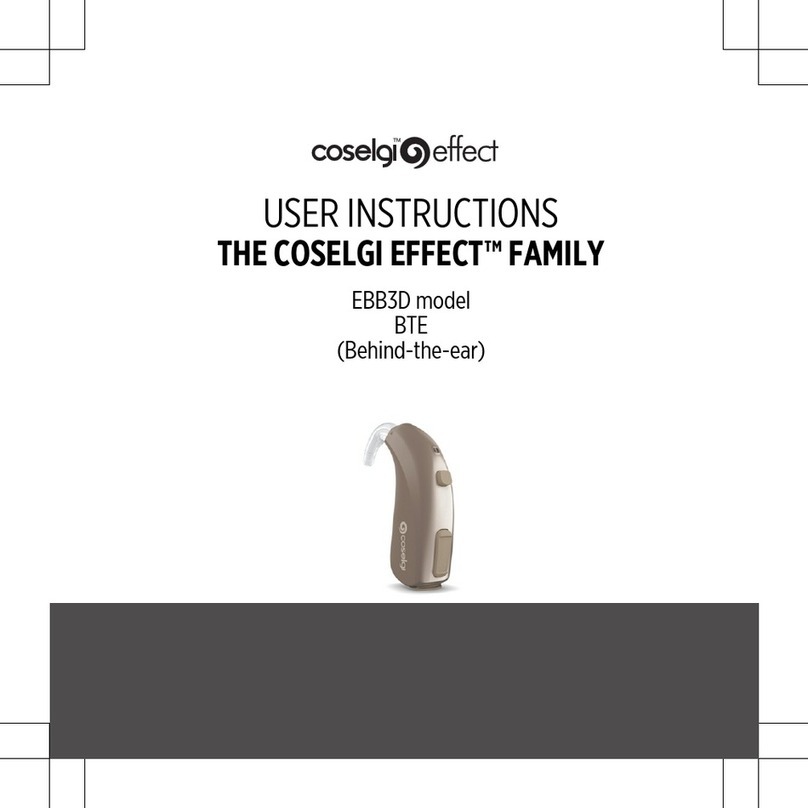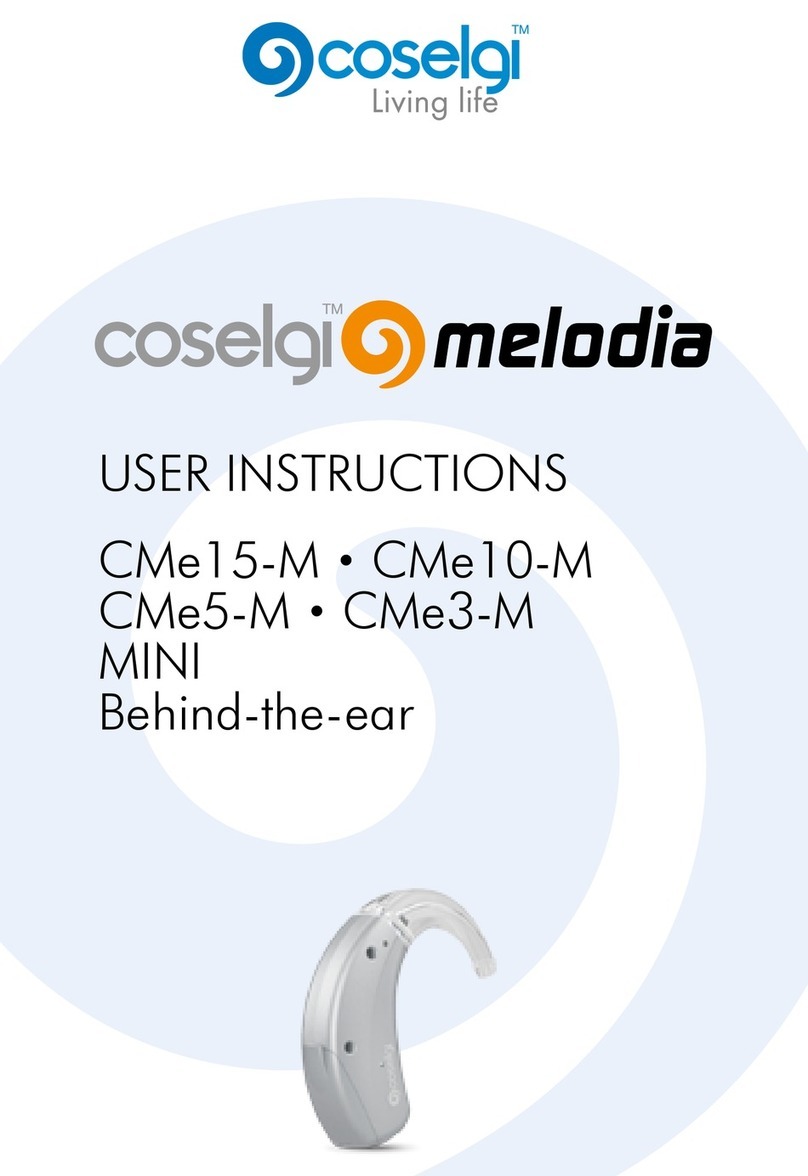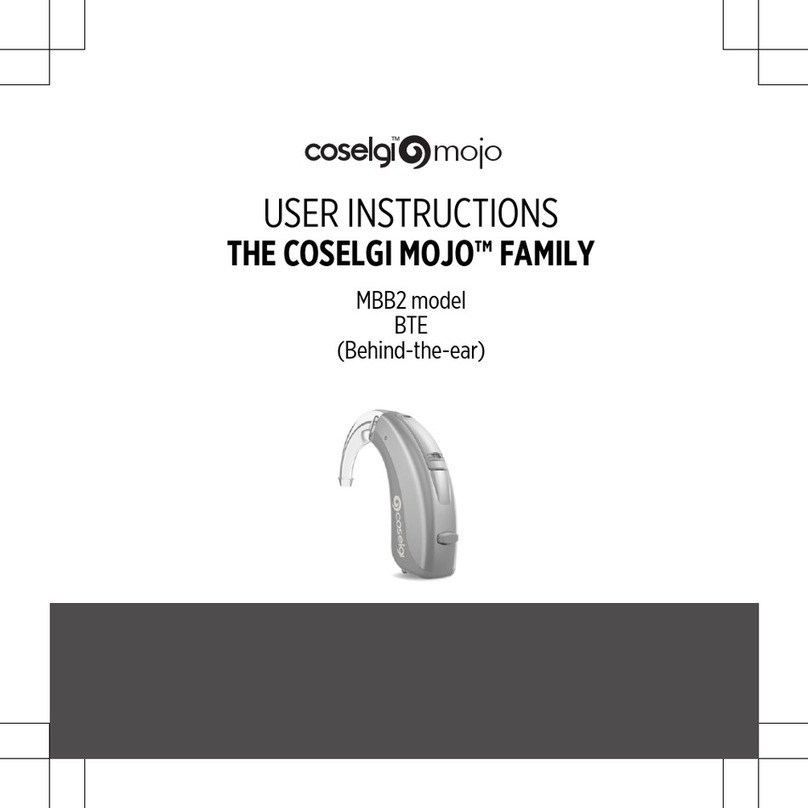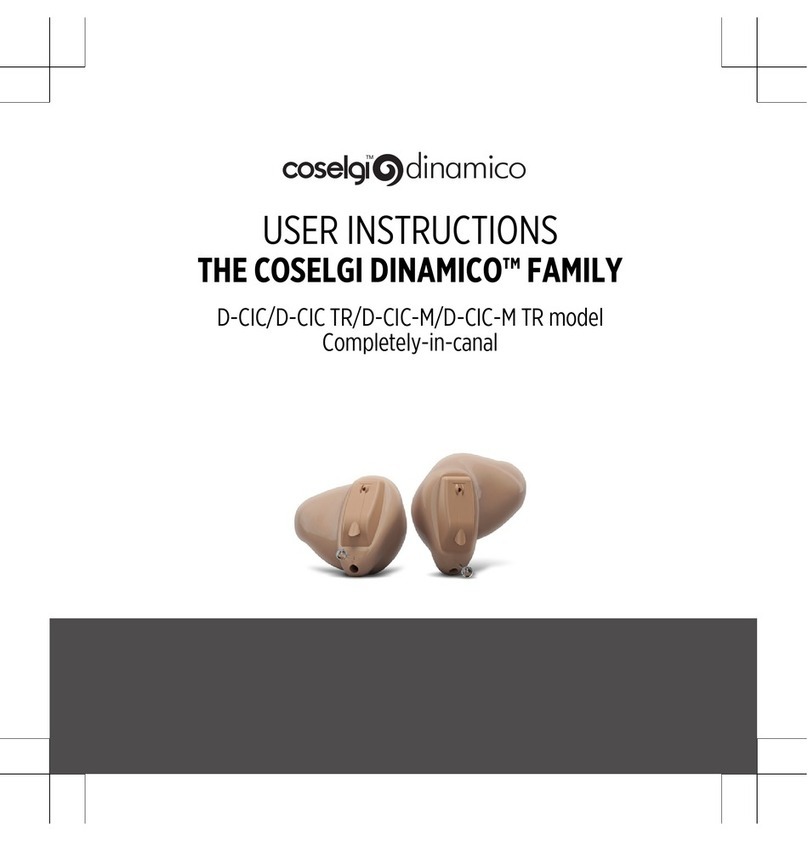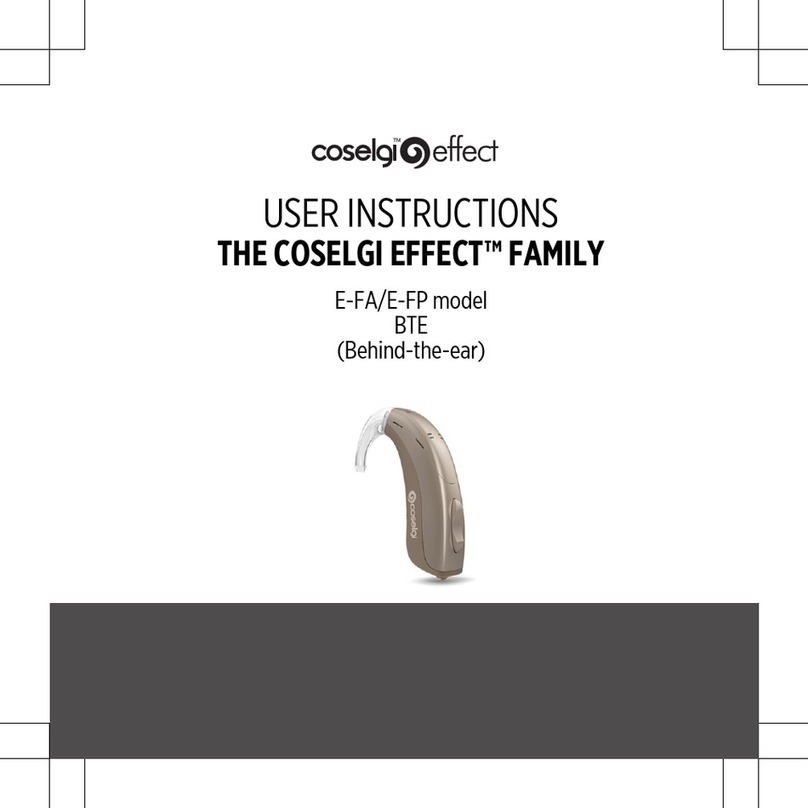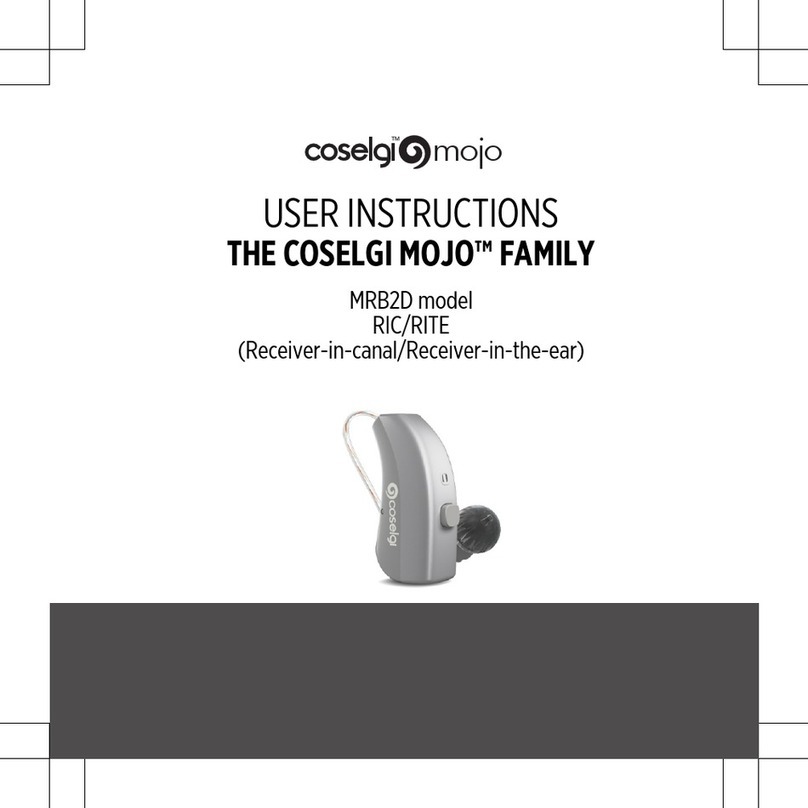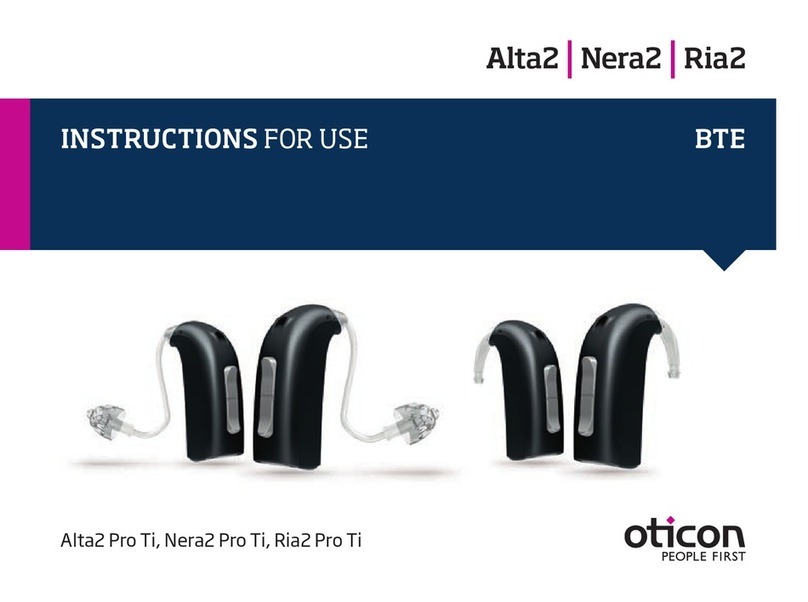CONTENTS
SYMBOLS ................................ 4
DESCRIPTION OF THE HEARING AID ........... 5
The battery ................................ 8
Inserting the battery ........................ 8
Low battery indication...................... 10
Turning the hearing aid on and off .............. 11
Right/left identification ....................... 12
Positioning the hearing aid .................... 13
Removing the hearing aid..................... 14
Volume adjustment ......................... 15
CLEANING .............................. 16
The hearing aid ............................ 17
The sound outlet ........................... 19
The relief vent ............................. 20
The microphone opening ..................... 21
WAX GUARD ............................. 22
Changing the wax guard ..................... 23
IN CASE OF MALFUNCTION................. 26
CARING FOR YOUR HEARING AID ............ 28
WARNINGS ............................. 29
ADVICE ................................. 32
REGULATORY INFORMATION ................ 33
3
